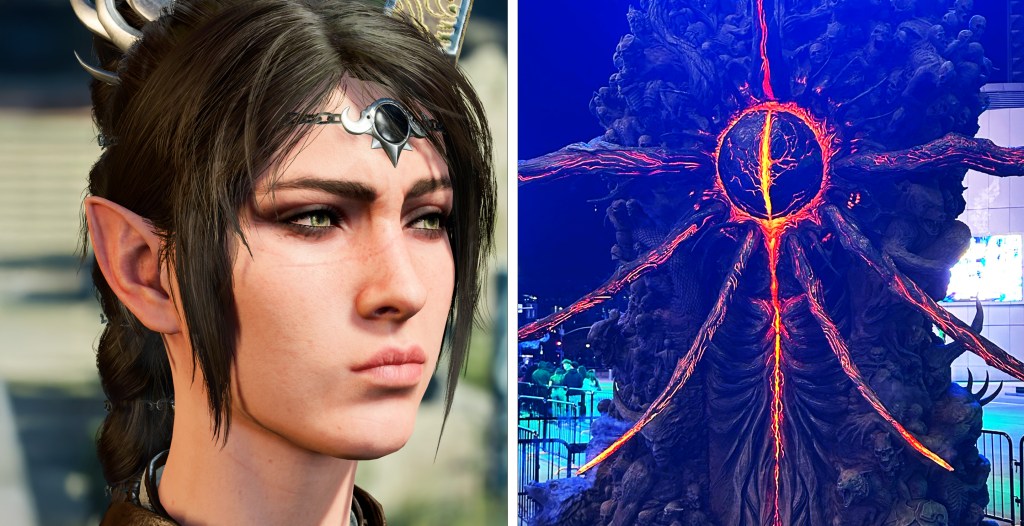From the initial looks we got of Rihanna’s new Fenty clothing line on Wednesday, it seemed like the core concept was going to be something like a modern take on European medieval looks. She’d be building corsets into everything from suits to jean jackets to give us a taste of royalty. But it turns out she saved a last-minute surprise for the day of Fenty’s website launch. One of her core inspirations for the line, she told British Vogue, comes from a collective of Black artists, the African Jazz-Art Society & Studios (AJASS), who pioneered the Black is Beautiful aesthetic movement in early 1960s Harlem. Rihanna posted a single photo of an AJASS underground fashion show taken by the collective’s photographer Kwame Brathwaite Wednesday—before publishing the full Fenty site, where Brathwaite’s pictures ground Fenty’s visual world.
“When I was coming up with the concept for this release, we were just digging and digging and we came up with these [Brathwaite] images,” Rihanna said. “They made me feel they were relevant to what we are doing right now.” AJASS was a group of young artists and creatives who threw community fashion shows with dark-skinned, natural-hair models. They promoted modern takes on African-inspired fashion at a time when “dressing nicely” for Black people mostly meant suits and church dresses. Brathwaite, who was born in Rihanna’s home country of Barbados (and shares his last name with Rihanna’s mother pre-Fenty), helped document the collective’s rise in Harlem, and shape what the ‘Black is Beautiful’ aesthetic movement would look like. Rihanna told British Vogue that when she saw his archive (which now has its own photography book Black is Beautiful), “It was a really strange and powerful parallel.”
Videos by VICE
Rihanna also told British Vogue that while looking into Brathwaite’s history, she found out that Brathwaite’s models, known as Grandassa Models, made their own clothes by hand, which meant they were able to encourage communities to consciously buy Black-made clothing and other items, like in the Brathwaite image Rihanna Instagrammed Wednesday morning. The AJASS shows helped kickstart a Black aesthetic economy where everyone from clothing and jewelry makers to Afrocentric furniture stores had a place to be visible while dark-skinned models got exposure.
Rihanna may not be running a Black-owned fashion market just yet, but joining LVMH as the head of the first fashion house they’ve added since 1987 gives her a unique autonomy at a time when Black luxury designers are still fighting for a bigger seat at the table amidst continuous racial controversies. “I don’t know if [Fenty] is political so much as embracing the fact that people should be more aware,” Rihanna told British Vogue. “But definitely, we want people to see the parallels between what was then and what this is now, in a modern way.”
Looking at Fenty’s new website and initial offerings, it’s not hard to draw parallels between what Grandassa Models were pushing for and Rihanna’s designs. Aside from the website’s emphasis on darker-skinned models (which is also a staple of Rihanna’s other makeup and lingerie companies), Fenty’s looks promote sleek African-inspired aesthetics too. One model rocks a billowing white denim corset dress with an elegant white head wrap, bringing the African hairstyle to a luxury setting.
It’s also fitting that a number of Fenty designs seem to be nodding to hip-hop fashion, too; the AJASS collective gained a lot of its momentum from existing at a time when music, fashion and pro-Black politics were intertwined. Their shows became popular partly because jazz lovers were already interested in fashion; later musicians who repped the natural hair movement like James Brown or Bob Marley worked with Brathwaite too. Rihanna, for her part, is putting a modern luxury twist on a number of hip-hop staples, from the oversized denim jackets that 90s female rappers like Mary J. Blige wore to baseball caps and big thick hoop earrings.
The fashion aesthetics of dapper jazz pioneers, natural-haired funk / R&B singers, reggae artists, and hip-hop leaders may each have been different. But they were all grounded in the politics of striving for Black dignity. That fact is clearly not lost on Rihanna, who used Brathwaite’s photos as an introduction to a luxury line that claims it will “establish a dialogue between the past and present while championing diversity, femininity, and the power of black women and men.”
Sign up for our newsletter to get the best of VICE delivered to your inbox daily.
More
From VICE
-

Screenshot: Larian, X @shinobi602 -

Gene Siskel and Roger Ebert (Photo by Norm Staples/Getty Images) -

One of the finalists, "Now Which Direction Is My Nest?" (Credit: Alison Tuck) -

Credit: Google
